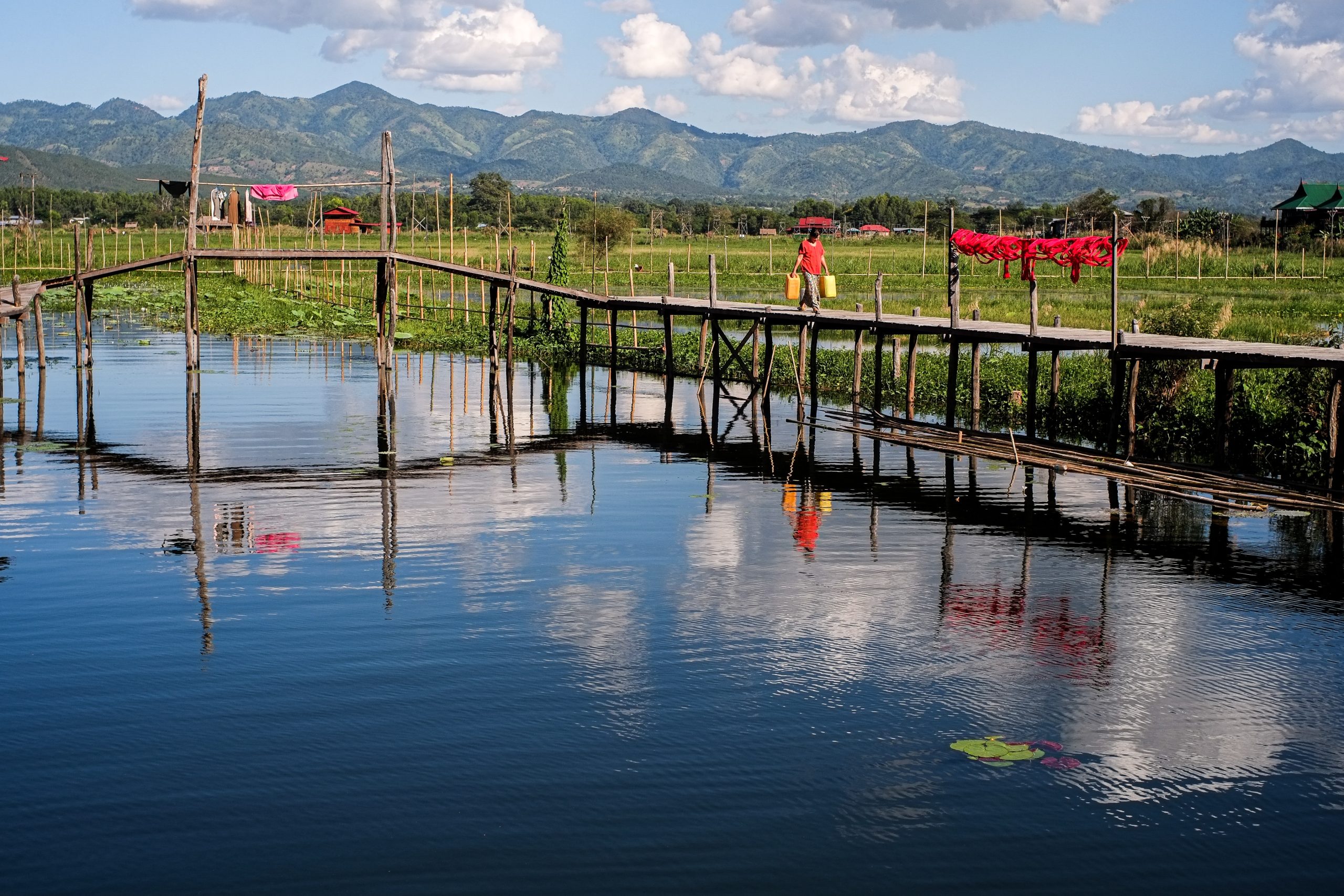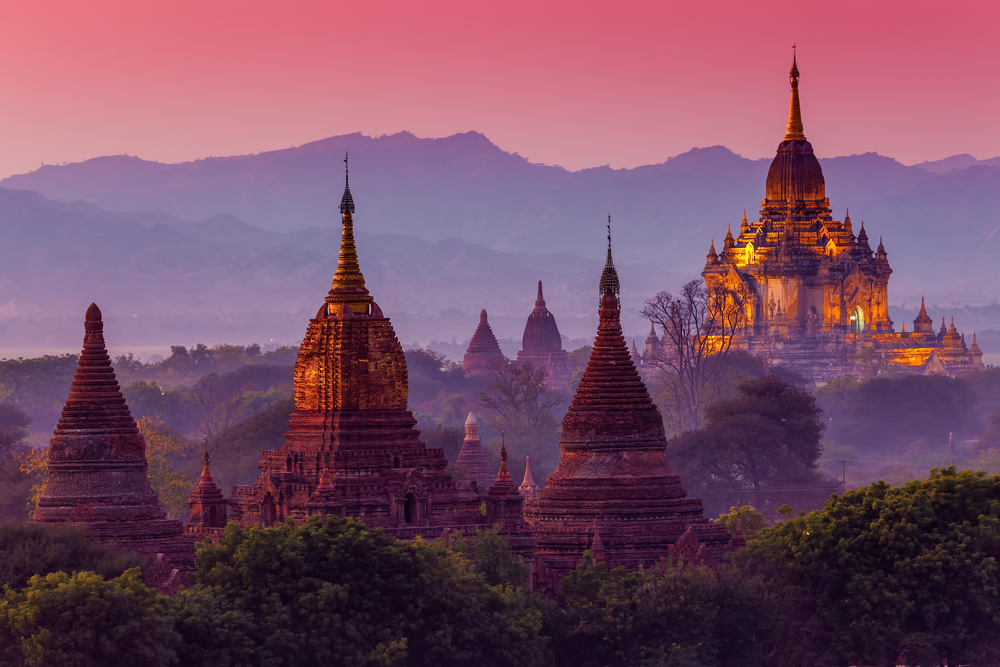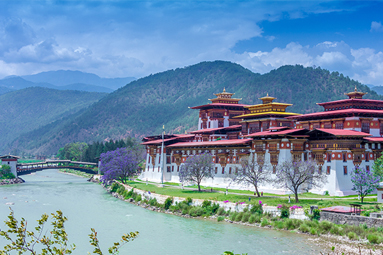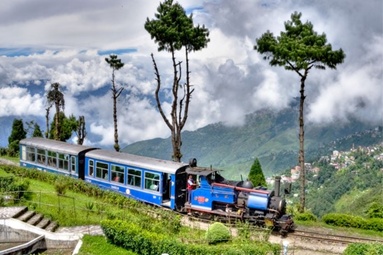Description
Highlights of Myanmar (13D12N)
At a Glance
Day 01: Arrival in Yangon
Day 02: Yangon
Day 03: Yangon – Mandalay
Day 04: Mandalay
Day 05: Mandalay – Mt. Popa – Bagan
Day 06: Bagan
Day 07: Bagan – Salay – Bagan
Day 08: Bagan – Kalaw
Day 09: Kalaw – Inle Lake
Day 10: Inle Lake
Day 11: Inle Lake
Day 12: Inle Lake – Yangon
Day 13: Departure from Yangon
Day 01. Arrival in Yangon
Welcome to Myanmar!
Upon clearing Customs and Immigration, your English-speaking guide will present you with a welcome packet including all necessary documentation and vouchers and all contact information of your guide and local offices.
Enigmatic and enchanting, Myanmar, formerly known as Burma, is often referred to as the Golden Land. Myanmar’s long-term isolation has bequeathed a corner of Southeast Asia full of traditional culture, spirituality and old-world charm. A visit to Myanmar is like turning back the clock. Phone and internet connections can be erratic in areas so you may peacefully experience a culture which emphasizes spirituality and reveres monks and holy men.
Transfer by air-conditioned vehicle to the hotel and time at leisure.
Overnight in Yangon
Meal(s): –
Day 02. Yangon
Yangon lies in the fertile delta of southern Myanmar, on the wide Yangon River. The city is filled with tree shaded boulevards, while shimmering stupas float above the treetops. The city became the capital only in 1885, when the British completed the conquest of Upper Myanmar and Mandalay’s brief period as capital of the last Burmese kingdom ended.
Walking tour around colonial buildings nearby Sule Pagoda; start your exploration of colonial Yangon from the Heart of Yangon, where you will see Sule Pagoda from the outside, the City Hall with amazing architecture of Myanmar, Emmanuel Baptist Church, High Court (formerly known as the Parliament for Justice) and Mahabandoola Park. And continue to the Secretariat Building, a Victorian building, which housed the parliament from 1948-1962. Afterwards, walk down to Strand Road, on the way you will explore Gandhi Hall, where the National League for Democracy drafted the Gandhi Hall Declaration, issued on July 29, 1990 and the Armenian Church. Explore the Post Office, The Strand Hotel, Port Authority building and Accountant General’s Office %26 Currency Department. Then as a final stop, walk to Yangon Heritage Trust (Yht) office, a non-profit organization that works to preserve and protect the city’s rich urban heritage and display the past and present photos of Yangon are displayed and learn more about Yangon.
Visit Shwedagon Pagoda
The highlight of any visit to Yangon, the Shwedagon Pagoda dates back ab out 2600 years and was built to house eight sacred hairs of the Buddha. Its original shape has changed beyond all recognition over the centuries. Its bell-shaped superstructures covered in about 60 tons of gold-leaf, which is continuously being replaced.
Overnight in Yangon
Meal(s): Breakfast, Lunch
Day 03. Yangon – Mandalay
Transfer to the airport to take flight from Yangon to Mandalay. Arrive Mandalay and transfer to the city.
Sightseeing in Mandalay
The last capital of royal Burma, Mandalay is still one of the largest cities in Myanmar, and a cultural and spiritual centre. Neighbouring Sagaing is home to over sixty per cent of the country’s monks, while the artisans of Mandalay continue to turn out the finest crafts in Myanmar. Visit Mandalay Hill and take an easy climb up the sheltered steps to see panoramic views over the palace, Mandalay and the paya-studded countryside. The famous hermit monk, U Khanti, is credited with inspiring the construction of many of the buildings on and around the hill in the years after the founding of the city. Visit Shwenandaw Kyaung , a monastery of great interest, not only as a fine example of a traditional Burmese wooden monastery, but as a fragile reminder of the old Mandalay Fort. At one time this building was part of the palace complex, and was used as an apartment by King Mindon and his chief queen, and it was here that he died. After Mindon’s death, King Thibaw Min had the building dismantled and reassembled on its present site in 1880 as a monastery. Visit Kuthodaw Paya. The central stupa of the Kuthodaw Paya was modelled on the Shwezigon Paya at Nyaung U near Bagan. Building commenced in 1857, at the same time as the royal palace. The paya has been dubbed ’the world’s biggest book’, for standing around the central stupa are 729 marble slabs on which are inscribed the entire Tripitaka.
Overnight in Mandalay
Meal(s): Breakfast
Day 04. Mandalay
Today, you will be taken to the other side of the Irrawaddy River for a trip to Mingun by local ferry boat.
Among others, you will visit the Mingun Paya. Work on this gigantic structure begun by King Bodawpaya in 1790 and halted in 1819 when he died. If the work had been finished, Mingun might now have the world’s largest pagoda. The stupa base sustained heavy damage in the earthquake of 1838, which left a deep crack scarring its façade. It is now 50 m high, a third of the projected height of 150m.
Mingun Bell – in 1808 the King had a gigantic (90 tones) bell cast for the Mingun Paya. It is supposedly the largest uncracked bell in the world.
You will also visit Hsinbyume Paya: built in 1816 By Bagyidaw, before he became king, in memory of his senior wife, princess Hsinbyume. It is a nice white round shaped zedi, with one nicely decorated stairway guiding up to the top terrace.
After Mingun, we’ll visit the ancient royal capital of Inwa (Ava). This is like taking a fascinating trip back in time. No cars are allowed in this rural riverside oasis so we’ll travel in local style – by horse and cart. We’ll explore the ruins of the old wall, watchtowers, monasteries and temples. We’ll see loads of incredible sights and learn tons of history about the old kings of Myanmar.
And then there’s Amarapura, home to U Bein Bridge which extends over one kilometre across Taungthaman Lake, making it the longest teak bridge in the world. We’ll visit artisanal workshops and learn tons of history about the old kings of Myanmar.
Overnight at Mandalay
Meal(s): Breakfast, Lunch
Day 05. Mandalay – Mt. Popa – Bagan
Overland from Mandalay to Nyaung Oo (Bagan). On the way visit to the Mt. Popa.
Today is all about spirits – fiery but drinkable spirits and a temple-topped volcano dedicated to the ‘nat’ spirits. The day starts in a local village where we enjoy Burmese tea in a local toddy palm hut. The locals will demonstrate how they climb the palm trees and use the sap to make palm sugar and fiery liquor.
We continue our tour to Mount Popa, an extinct sheer-sided volcano that rises out of the plain. Topped by golden stupas, it is a famous pilgrimage site for locals who come to worship at the ‘nat’ (spirit) temples.
Then drive to Bagan and time at leisure.
Overnight in Bagan
Meal(s): Breakfast, Lunch
Day 06. Bagan
OPTIONAL – Hot Air Balloon Ride during the Sunrise: USD 295 per person
What better way to see the thousands of temples and stupas that litter the plains of Bagan than from high in the sky? Climb into your own private compartment in the basket and get ready for lift off! As you rise into the sky Bagan will slowly unveil its secrets as hundreds of crumbling pagodas appear through the morning mist. Gently drift along with the wind over the dusty plain and the winding Irrawaddy River.
Bagan is a true bucket-list destination! Thousands of crumbling temples, pagodas and stupas rise from the ancient desert plain. These beautiful, other-worldly structures were built by the kings of Bagan in the 11th and 12th centuries. Words don’t do this incredible landscape justice!
The Shwezigon Pagoda’s graceful bell shape became a prototype for virtually all later stupas all-over Myanmar, and the pagoda originally marked the northern end of the city of Bagan.
Ananda Pahto, one of the most beautiful, largest and best-preserved temples in Bagan. It was built by King Kyanzittha around 1105 who was inspired by Indian architecture. It sustained significant damage during the 1975 earthquake but has been fully restored.
Gubyaukgyi Temple at Wetkyi-Inn was built in the early 13th century and repaired in 1468. The vivid colourful paintings and the impressive architecture make this temple an interesting site for a visit. This temple is not to be confused with the Gubyaukgyi Temple in Myinkaba. The temples primary point of interest is most certainly the fine and detailed frescoes depicting scenes from the jatakas, Buddha’s numerous past lives.
Shwesandaw Pagoda was built in 1057 by King Anawrahta following his conquest of Thaton. This is the first monument in Bagan, which features stairways leading up from the square bottom terraces to the round base of the Stupa.
Overnight in Bagan
Meal(s): Breakfast, Lunch
Day 07. Bagan
Excursion to Salay (4 hours)
Explore local life in this unspoiled Burmese town of Salay. Visit the Yoke Son Kyaung, the oldest surviving wooden monastery. Continue to wander around the town and the market. Visit Mann Paya- a modern pagoda housing a 6m gold Buddha made of straw lacquer.
After lunch, return to Bagan with a stop by a palm village. Stop at a typical village, where villages demonstrate how they press palm juice and oils from the native plants, make jaggery from the sugars, and weave baskets from the palm leaves. Take pleasure in cruising on the river with a private boat. Witness the golden sun setting beyond the mountains and the silvery moon rising casting reflections over the water on the horizon while the remarkable views of pagodas, temples and evening life take the breath away.
Take pleasure in cruising on the river and witness the golden sun setting beyond the mountains.
Overnight in Bagan
Meal(s): Breakfast, Lunch, Dinner
Day 08. Bagan – Kalaw
By vehicle from Bagan to Kalaw (258 kms). Come straight to Magway elephant camp to an elephant village and see the life of mahouts with their families. Time to introduce the elephants and feed them their daily prepared food. Then proceed to the river where you can help bathe the elephants. Lunch will be served at the main camp. You are also welcome to join in on planting regional trees from the nursery in their forest recovery efforts. Return to the main camp and enjoy the view through the valley. Drive back to Kalaw and overnight.
Overnight in Kalaw
Meal(s): Breakfast, Lunch
Day 09. Kalaw – Inle Lake
Visit the British-built train station: here is a prodigious smattering of colonial architecture still in great condition. The red brick railway station just south of the town centre might as well have been plucked straight out of an English village.
Visit a hilltop monastery for panoramic views over the town.
Transfer by vehicle to Inle Lake, then transfer by boat to your hotel.
Overnight in Inle Lake
Meal(s): Breakfast
Day 10. Inle Lake
Enjoy a boat ride on Inle Lake and discover its calm serenity and still waters. Rolling high hills hug the lake on all sides, as the lake’s shore and islands host 17 villages on stilts, mostly inhabited by the Intha people. Enjoy the awe-inspiring scenery and meditate on the one-of-a-kind skill of the local fishermen who use their legs in a unique rowing technique to glide themselves gracefully around the lake. Visit the enchanting floating gardens, a teeming market and an Intha village around the lake. The DAY also includes a visit to the Phaung Daw Oo Pagoda, Inn Paw Khon Village (Lotus and silk weaving villages) and the Nga Phe Kyaung Monastery. Visit a cheroot factory and rest of the DAY at leisure.
Overnight in Inle Lake
Meal(s): Breakfast, Lunch
Day 11. Inle Lake
After breakfast at the hotel, we will further explorer the region around Inle Lake.
Thousands of mysterious temples and stupas await at the end of a boat ride along a narrow creek cloaked in foliage. The Indein complex is a collection of over 1,000 densely packed Shan-style stupas in varying states of decay. Part of its charm is that it has escaped restoration and the air of neglect just adds to the ethereal atmosphere. Don’t forget your camera as this place is otherworldly.
For lunch, we’ll mix and mingle with the Inthar today. Local farmers will show us how they construct the beautiful floating gardens from plants and water hyacinths.
We’ll meet people who live in the traditional houses constructed on stilts on the water. A family will welcome us into their home for an Inthar-style lunch and cups of Burmese tea.
Overnight at Inle Lake
Meal(s): Breakfast, Home-hosted Lunch
Day 12. Inle Lake – Yangon
Depart Inle by boat and car back to Heho. Board a flight to Yangon. Arrive and transfer to your hotel for your last night in Myanmar!
Overnight in Yangon
Meal(s): Breakfast, Lunch
Day 13. Departure from Yangon
After breakfast and check out from the hotel, transfer to the airport for your departure flight from Yangon.
Meal(s): Breakfast






Reviews
There are no reviews yet.